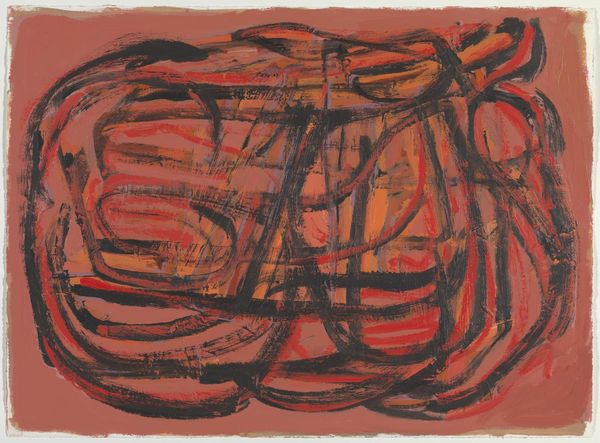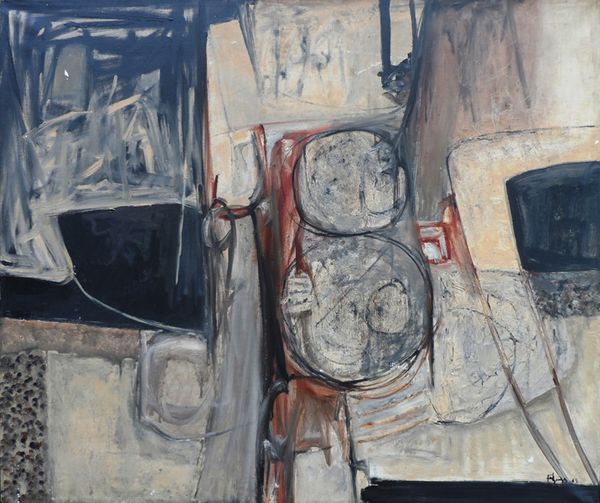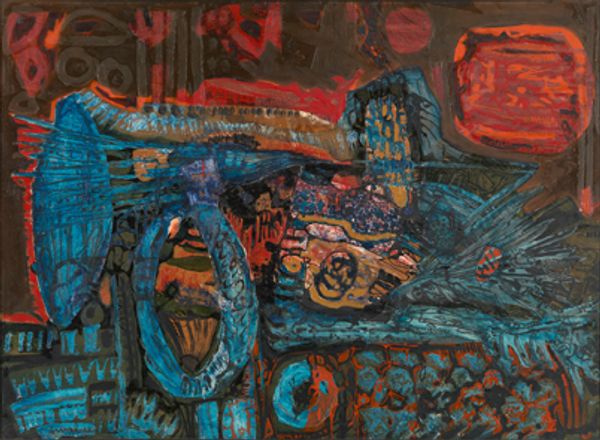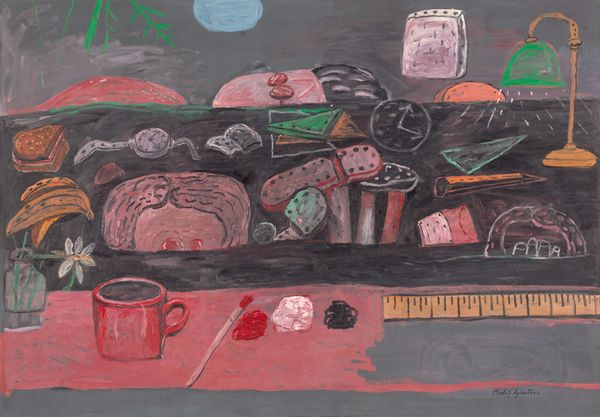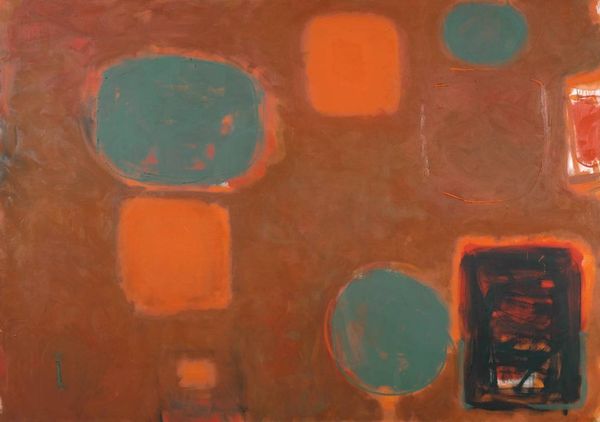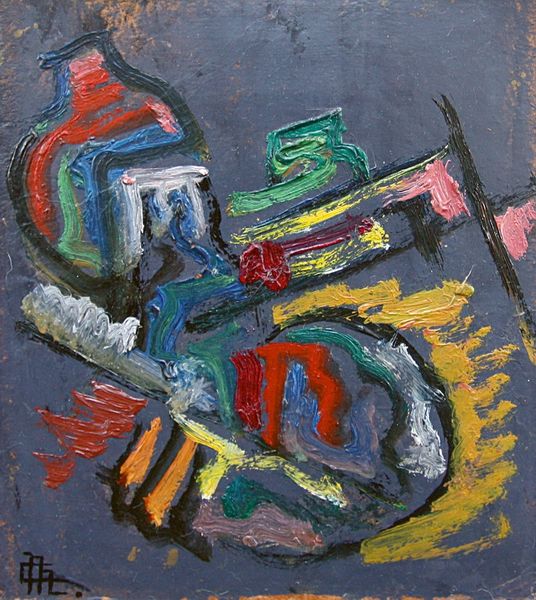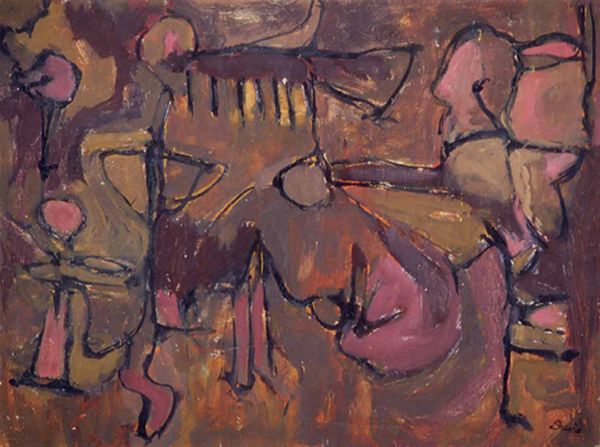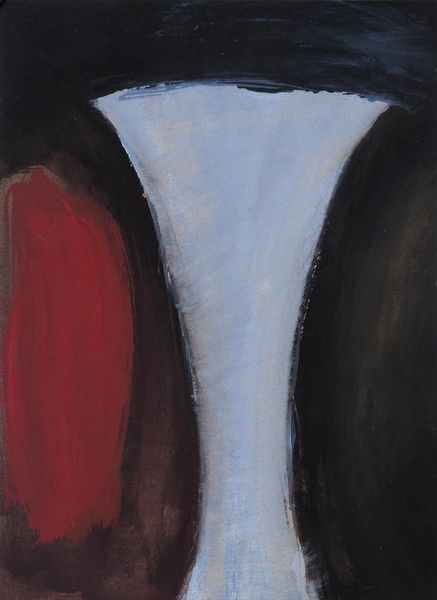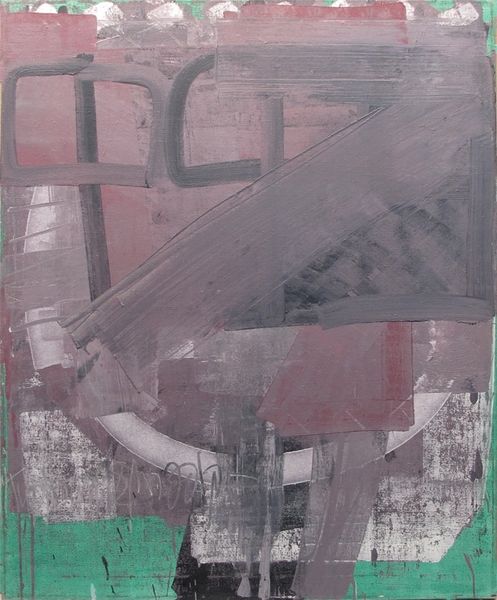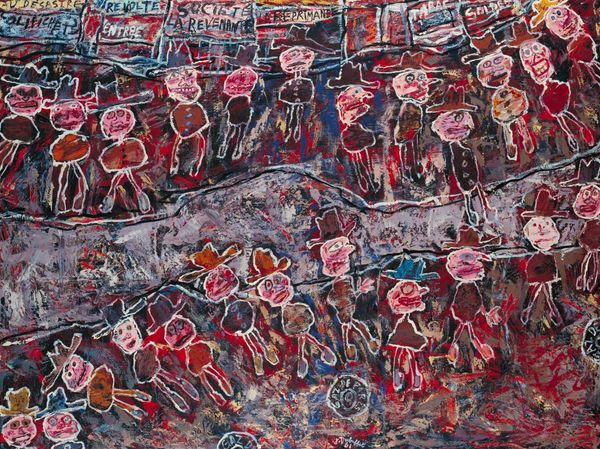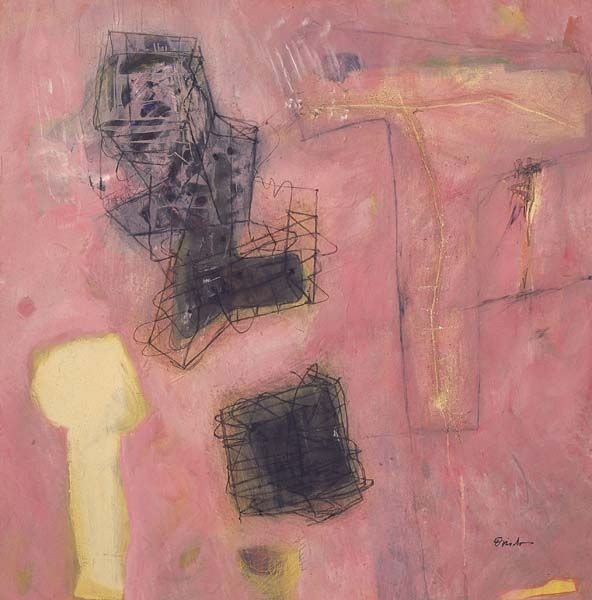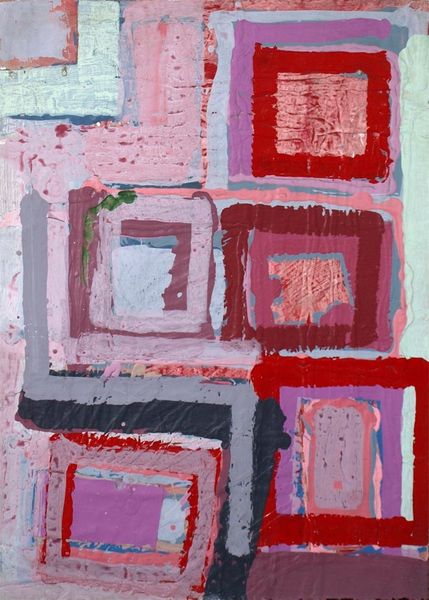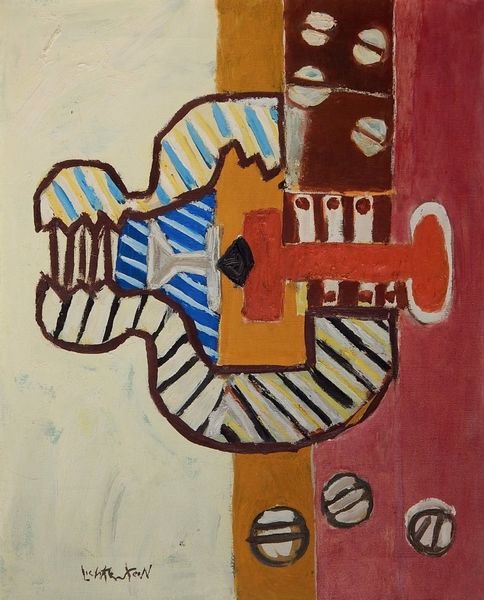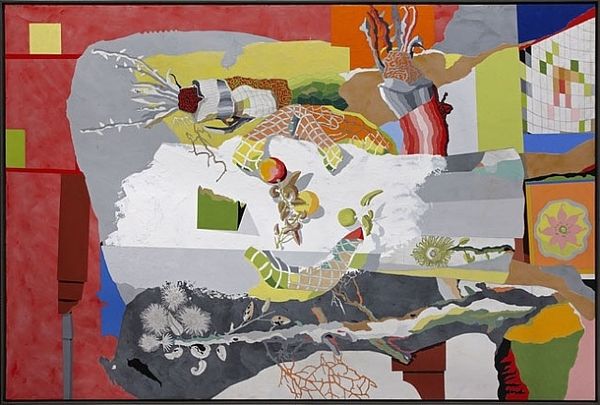
Dimensions: support: 2032 x 2794 mm
Copyright: © The Estate of Philip Guston | CC-BY-NC-ND 4.0 DEED, Photo: Tate
Editor: Here we have Philip Guston’s "Monument," a large-scale painting from the Tate collection. I find the shapes unsettling, almost like a fortress made of…flesh? What do you see in this piece? Curator: The repeated forms, rendered in that fleshy pink, certainly evoke something primal. Notice how Guston disrupts the monumentality—traditionally associated with strength and permanence—by using such vulnerable imagery. What cultural echoes do you think he's conjuring? Editor: Perhaps a crumbling of power, a vulnerability behind the facade? I hadn't considered that subversion. Curator: Exactly! The power of the image lies not just in what it depicts, but also in what it omits and suggests. It makes one reconsider what foundations truly support societal structures. Editor: I’ll certainly look at monuments differently now.
Comments
Join the conversation
Join millions of artists and users on Artera today and experience the ultimate creative platform.
tate 3 months ago
⋮
Many of Guston’s paintings have a disturbing quality, featuring abject or grotesque objects. In Monument, legs are grouped in a tangle to form a looming edifice. Guston, who was Jewish, had been deeply affected by film of the Nazi concentration camps, which may have influenced the imagery of disembodied limbs in his work. In 1973, he wrote: ‘Our whole lives (since I can remember) are made up of the most extreme cruelties of holocausts. We are the witnesses of the hell.’ Gallery label, November 2015
